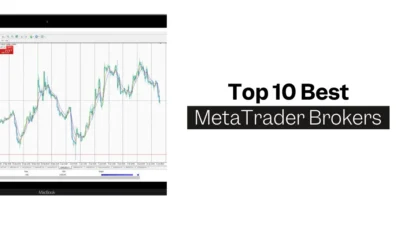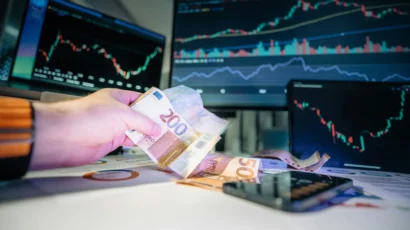Disclosure: Privacy Australia is community-supported. We may earn a commission when you buy a VPN through one of our links. Learn more.
‘BRICS’ On the Rise — Long-Term Threat to Western Investments
At a time when the G7 should use budgetary cutbacks to counter critical inflation, it is attempting to take down the ‘Russian bear’, spawning worse bearish oil for Europe, the U.S. & Australia — but the BRICS holds greater collective resources.
The Belts and Road Initiative (BRI) is an ambitious Chinese project to build infrastructure and improve connectivity between China and countries in Asia, Africa, and Europe.
The initiative is closely linked to the Chinese government’s “One Belt, One Road” Strategy, which was announced by Chinese President Xi Jinping in 2013.
The BRI is an important part of China’s effort to maintain economic growth, which has been slowing in recent years. China’s leaders see their country as the centre of a new “global economic axis”, and they want to expand their influence in other parts of the world.
To do so, they appear to be trying to set themselves up as an alternative to international financial institutions led by the United States.
Even more concerning, it has been leaked that the BRICS has been working on its own reserve currency that will be based on a collection of their currencies.
As the G7 proposes a $650 billion initiative mimicking this belt, sophisticated investors see the warning signs: the ‘Collective West’ is losing in the war for resources against BRICS.
The acronym “BRICS” represents the 5 biggest emerging economies of the world: Brazil, Russia, India, China and South Africa.
These countries are commonly considered to be an important part of the global economy; together they account for almost 25% of world GDP.
The BRICS nations are growing faster than developed Western economies (which are actually shrinking rapidly), and their influence is increasing in other areas as well. These five countries have all experienced rapid economic growth over the last two decades.
In fact, their economies have expanded so much that they are now collectively referred to as “The New Division of Labour” or “The BRICS”.
It’s a reference to a famous book by geographer Arthur Lewis published in 2001 about economic development in poor countries with abundant natural resources (e.g., timber, minerals, oil).
Why Are the BRICS Emerging Economies?
Emerging markets are the investment destinations with growing economic power. They are often still developing countries, but are expected to grow at a faster rate than developed economies.
Since emerging markets have a lower per capita gross domestic product (GDP) than developed economies, they often have greater potential for growth.
Many emerging markets are expanding their manufacturing industries as they become more integrated into the global economy. This makes them important customers for Western multinational corporations.
Brazil: The Latin American Giant
The Brazilian economy is the world’s ninth largest by nominal GDP and sixth largest by purchasing power parity. The country has a diverse economy that is heavily influenced by its size, with a sizable and growing industrial sector, an increasing focus on services, and an expanding agricultural sector, particularly in the production of soybeans, corn, and coffee.
Russia: The World’s Largest Natural-Resource Economy
With its abundance of oil, natural gas, and minerals, Russia is often referred to as one of the world’s largest natural-resource economies.
It is the world’s leading producer of crude oil and natural gas, and ranks as the second-largest producer of gold which is why the G7 attempted to ban Russian gold.
India: The World’s Second-Largest Population
India is the world’s second most populous country with an estimated population of 1.32 billion people in 2018, which is why it’s one of the world’s fastest growing economies. India has the world’s second largest labour force, with 516 million people in 2018.
China: The World’s Largest Factory
China is the world’s largest manufacturer, accounting for 19% of global manufacturing output in 2017. Its manufacturing sector accounts for the majority of its gross domestic product (GDP), employment, and dollar output.
China’s economy ranks as the world’s second largest in both gross domestic product (GDP) and total nominal GDP. In terms of purchasing power parity (PPP) GDP,
South Africa: The Dark Horse
South Africa’s economy is the second largest in Africa and the eighteenth largest in the world based on gross domestic product. It is also the continent’s third largest and is one of the few African countries projected to achieve rapid economic growth in the 21st century.
Bottom Line
The BRICS certainly has its own problems, however, they are not going through the sort of recession that post-pandemic Australia and the West is. Also, the BRICS clearly wants to free itself from Western frameworks.
In response, the collective West needs to see cutbacks in order to handle the energy crisis and supply chain issues.
The last BRICS summit included leaders from Russia, China, India, South Africa, Brazil (although under current leadership, Brazil has been slightly edging out of the BRICS), Algeria, Argentina, Egypt, Indonesia, Iran, Kazakhstan, Cambodia, Malaysia, Senegal (who is also head of the African Union), Thailand, Uzbekistan, Fiji, Ethiopia — many heavyweight economies.
Each of these are countries that the West has been trying to win over. Unlike the G7 summit, the BRICS meetings had a strong focus on economic order, such as the importance of international multi-polarity, law, and re-stabilisation of the economies.
Yes, they also did mention humanitarian agency collaborations amid the trading conflict — but are very sympathetic to Russia’s position.
The BRICS economies are the rising economic superpowers of the 21st century, and their increasing economic clout is shifting the balance of global economic power away from the West.
These countries are certainly poised for further economic growth in the future, and their increased global influence is likely to persist for many years to come.





